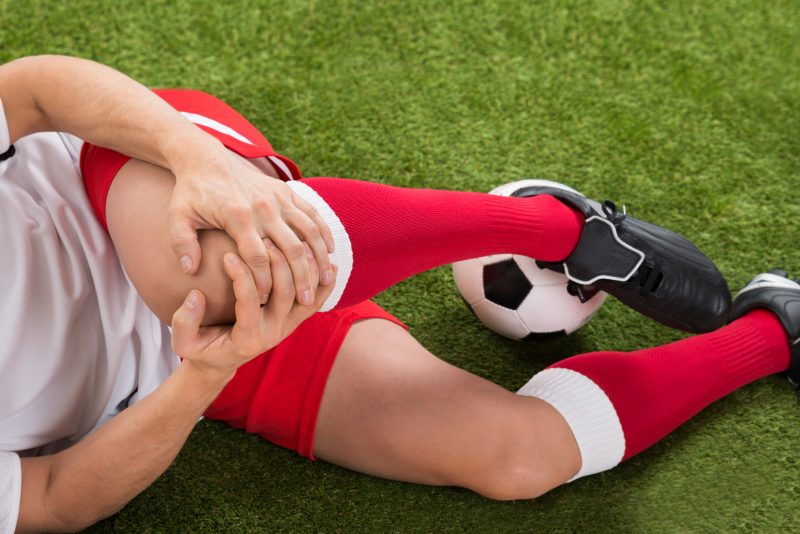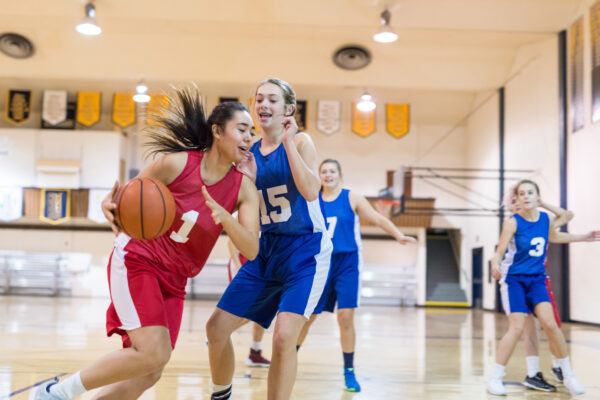
One of the risks of playing sports is getting hurt. Obviously, some sports are more dangerous than others, but unfortunately, latest research shows ACL injuries are on the rise among young athletes.
According to the American Academy of Pediatrics (AAP), ACL tears in kids ages 6 to 18 have increased about 2.3 percent each year for the past 20 years. That may come as no surprise, given the growth and hyper intensity of organized youth sports.
“ACL tears are quite an epidemic,” said Derrick Eddy, MD, a sports medicine physician at Akron Children’s. “More kids are participating in sports, so the risk of exposure is higher. Plus, girls have up to 8 times higher likelihood to tear an ACL compared to male counterparts. Research shows one reason is there are hormonal and anatomical differences in girls that are attributing to the rise in this common knee injury.”
The ACL – anterior cruciate ligament – is the main ligament of the knee. It stabilizes the knee joint and can tear as a result of sudden stopping or cutting. The tear often sounds or feels like a pop, followed by pain, swelling and loss of range of motion.
Dr. Eddy answers your questions about what to expect from an ACL injury.
Should you seek immediate medical attention?
It depends. If it happens in a weekend game, obviously you won’t be able to see your child’s sports medicine specialist right away. If your child can still walk and the pain and swelling aren’t terrible, you should be able to wait to see a doctor. Home first aid should include icing and wrapping the knee, along with keeping it elevated.
“But if your child is having trouble putting weight on the knee, it’s not a bad idea to go to the ER or urgent care,” Dr. Eddy said. “You might not get a diagnosis, but they can get your child on crutches and help with pain until you can see your sports medicine specialist.”

Girls have up to 8 times higher likelihood to tear an ACL compared to male counterparts.
How is an ACL tear diagnosed?
“Eighty percent of the time, I can diagnose an ACL tear based on the story alone — the plant, the twist and the pop — and the exam solidifies it,” Dr. Eddy said. “We do an X-ray to check for possible fracture. We get an MRI to confirm my findings of a tear.”
Is surgery always necessary?
Most athletes who participate in sports that involve running, jumping, pivoting or contact will likely need surgical treatment.
“A partial tear usually doesn’t need surgery, but that’s uncommon,” Dr. Eddy said. “The ACL either ruptures or it doesn’t.
“You can live your life without an ACL, but if you ever want to cut and move side to side, you have to have an ACL,” he said. “Most patients I see are very young and they still want to play sports, so they want to have surgery, which creates a new ACL from a tendon in the child’s knee.”
What is the recovery time?
“It’s not a quick turnaround. It takes 6 to 8 weeks for the graft to adhere, and generally about 9 to 12 months before you can return to sports,” Dr. Eddy explained. “There is some data that shows if kids go back before 12 months, there is a 10 percent higher risk of re-tearing the ACL.”
Another issue is many athletes need additional mental support to fully recover from their injury. “Athletes often deal with fear of reinjury and mood disturbances,” said Dr. Eddy. “One study found that more than 40 percent of patients that tore their ACL were diagnosed with depression. Once an athlete tears an ACL, exercise comes to an abrupt halt. That athlete is used to exercise that releases endorphins that bring about feelings of happiness.”
How can kids prevent an ACL injury?
Akron Children’s offers ACL injury prevention programs to school and club sports programs that incorporate plyometric and strengthening exercises, as well as neuromuscular training to improve running, jumping and landing techniques.
According to the AAP, these specific types of physical training can reduce the risk of an ACL injury as much as 72 percent, especially in teen girls.
“Another way to prevent ACL tears is to see a sports medicine specialist at the first sign of knee pain,” said Dr. Eddy. “Most of the time knee pain during sports is caused by a muscle imbalance combined with repetitive motion, making the athlete more vulnerable to injury. We can reduce the risk of an ACL injury by correcting the child’s muscle imbalance.”
Akron Children’s Sports Medicine Center offers the resources and treatment options young athletes need to have the healthiest sports seasons possible, both mentally and physically. You can schedule an appointment online, in MyChart or by calling 330-543-2778.










